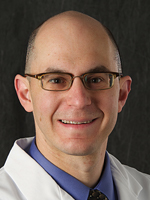
Dr. French
“Patients are all at different stages of transitioning,” says Deborah French, PhD, a coauthor on the paper. “So it’s hard to draw any conclusions from the paper, quite honestly,” though it’s possible the unexpected levels could be related to length of time the patients were on hormone therapy. “I know that it took a long time to even put the data together to make some semblance of sense from it, because it was all over the map.”
Labs could find all these unknowns disorienting. “We feel like we know how things work,” concedes Dr. French, who is associate clinical professor of laboratory medicine, UCSF Department of Laboratory Medicine, and assistant director of chemistry, UCSF clinical laboratory. “And then you can often be surprised. As much as we think we know things, we also don’t know a lot,” she says, laughing.
Or, as Susan Butler-Wu, PhD, D(ABMM), SM (ASCP), frames it, “We don’t know enough yet to have solutions.”
Dr. Butler-Wu, associate professor of clinical pathology, and director, medical microbiology, LAC+USC Medical Center, Los Angeles, sees two broad areas that will likely demand labs’ attention sooner rather than later:
- The need for EHRs and LISs to capture patients’ gender/sexual orientation as well as their sex as mandated by the CMS’ final rule for meaningful use. Her hospital sees a large number of HIV-positive patients, a number of whom happen to be trans women. “We currently don’t even know that they’re trans until we have a resident who happens to see it in the clinical notes.” When the lab does have that information readily available, that prompts the second area of concern:
- What does such information mean in terms of the patient’s microbiology? “The bottom line is, we know extraordinarily little about what is normal flora among trans patients,” both women and men, she says.

Dr. Butler
Aware of those gaps, Drs. Butler-Wu and Greene convened a panel on the topic at the recent American Society for Microbiology Microbe meeting. Not that answers were in abundance—“There’s extraordinarily little known,” says Dr. Butler-Wu—but one goal was to nudge health care providers and laboratorians to start thinking about the topic.
Older literature is mostly confined to trans women and suggests that in these patients, the vaginal microbiota resembles “an almost bacterial vaginosis-like picture,” says Dr. Butler-Wu, who acknowledges that these findings are predominantly microscopy based—that is, next-generation sequencing has not been applied to these specimens to characterize the flora. “And we know almost nothing about trans male patients. We haven’t a clue what’s going on in terms of their normal flora and how that’s affected by hormones,” she says of males who’ve retained their vaginas after transitioning. That makes it challenging, to say the least, for microbiologists. “We have to make key decisions about what’s normal flora and what is not. And we just don’t know for these patients.” It’s possible, as very preliminary data suggest, that trans women might benefit from probiotics.
“The CLS at the bench isn’t going to be going through the medical doctor’s notes,” she continues. They rely instead on an LIS that invariably identifies the patient as male or female. “I worry about the potential for things to be worked up incorrectly because we’re making assumptions about somebody’s gender and their microbiota. We don’t want to overcall something that may not be relevant, or ignore something that may be highly relevant in these patients.”
In a field where almost everything seems to be overlooked, HPV might be more overlooked than others. “It’s a great topic,” says Dr. Butler-Wu with relish, “but it hasn’t been studied adequately at all. There’s only a handful of published studies on this.”
For trans women who have had a vaginoplasty, the most common way to do the procedure is to use penile inversion. In one study looking at the prevalence of HPV on penile tissue, says Dr. Butler-Wu, HPV was present in 24 percent of penile shaft samples and 28 percent of foreskin samples. “So we definitely have to think about persistent HPV in neovaginas,” she says.
On a related note, trans women have lower rates of sample adequacy for Pap screening. “Understanding the burden of HPV infection among trans women needs to be better studied,” says Dr. Butler-Wu. “Conceptually they would be at higher risk for HPV infection and potentially developing cancer.”
In their 2014 paper in American Journal of Medicine, Dr. French and colleagues noted that many transgender patients in the study (data were gathered before 2011, Dr. French says) lacked access to regular care. That may have changed in recent years, and she wonders aloud whether reliable care would mean different results.
It’s an intriguing research question. More worrisome, it points to a troubling facet of this field: Transgender patients epitomize an underserved (and, some point out, ill-treated) population. Dr. French and colleagues cited figures from the 2010 National Transgender Discrimination Survey that found 19 percent of respondents had been denied care, and 30 percent had been verbally or physically harassed while trying to obtain care.
While politics is a sticky subject, knowing how transgender issues have played out on the national stage does point to a fact that can’t be ignored. (See: President Trump’s tweet in late July announcing transgender people would not be allowed to serve in the U.S. military and falsely claiming that their medical costs were too expensive.) “Wrapped up in all this,” Dr. Levy says, “is how comfortable or uncomfortable employees and other patients may feel about these issues.”
At Geisinger, he says he’s “found it especially gratifying that everybody is incredibly open-minded and welcoming of this. We haven’t had any resistance or questions about why we’re doing this.” Although Geisinger is located in rural Pennsylvania, an area of the country that he says might be considered conservative, “Our employees are very respectful.”
That’s not the case everywhere. If transgender medicine is personal to patients, the same can be true for providers as well.
Dr. Butler-Wu points to HIV infection. One published study showed that transgender women, when compared to men who have sex with men, were less likely to have achieved viral suppression within 12 months of their HIV diagnosis. One reason may be that trans women are less likely to have access to timely care. “And when they do seek access, they may encounter a hostile environment,” she says.
This is more than just speculation. Matthew Krasowski, MD, PhD, vice chair of clinical pathology and laboratory services, and clinical professor of pathology, University of Iowa Hospitals and Clinics, Iowa City, explains how his institution became the main provider of health services for transgender people in the entire state of Iowa.

Dr. Krasowski
About five years ago, two UIHC physicians set up a clinic for LGBT patients. In the process, they found that particularly for patients who were transgender, the clinic was virtually their only option for comprehensive care. Transgender patients who required hormone therapy to treat gender dysphoria would find that providers in primary care or specialty clinics like endocrinology were uncomfortable providing services. “What the population was finding was that almost nowhere would take them,” says Dr. Krasowski. The clinic grew from offering primary care services to hormonal therapy and other aspects of transgender medicine, including specialty referral for transgender-related surgeries. “We have patients who travel for hours just to seek care.”
Nearly everyone who works with transgender patients can tell a similar story.
Dr. Butler-Wu says that when residents and fellows rotate through her microbiology lab, she makes a point of discussing trans health with every one of them. “I think there is a complete lack of awareness among many physicians—how it impacts laboratory testing, how to care for these patients at the clinical level.” For most, the reaction is positive; they become interested in and excited about challenges they hadn’t previously considered. “You can see the wheels turning. As pathologists, they’re trying to figure out how this will affect what they see in the microscope.” On the other hand, she’s also seen the occasional resident who is somewhat dismissive: Well, why do I care? So what? Some view transgender health as simply a psychological issue.
Sometimes the psychological dimension is more evident among physicians than patients. Few providers have strong personal beliefs about glucose testing for patients with diabetes, but they might about hormone therapy or Pap testing for a transgender male. The field, at least for now, “is that intersection between medicine and empathy and what people’s own sense of morality is. And sometimes that doesn’t pan out well,” says Dr. Butler-Wu, as evidenced by the hostility trans patients can face when seeking care.
She points to a story to illustrate the problems that face even the best-intentioned physicians—specifically, a colleague who is an emergency medicine physician. In taking care of a male patient who presented with abdominal pain, he was unaware that the patient was transgender and had a vagina. Dr. Butler-Wu says her colleague was taken by surprise, then was dismayed by his inability to hide his surprise from the patient, and he later wondered why the patient didn’t disclose this part of his identity.
For physicians and others who interact regularly with transgender people, the answer is obvious: It can be uncomfortable and potentially dangerous to disclose. “What blew my mind was that physicians might not understand how a trans male might not want someone to examine their vagina,” says Dr. Butler-Wu, who calls her colleague’s experience “emblematic of the state of affairs in medicine and medical education.”
She’s also had her fair share of encounters with providers who simply assume they don’t have transgender patients in their practice. “Transgender people have always been here,” she says. “They’ve always been our patients. They’re just more visible now. And you can’t get around the fact that there are unique laboratory and clinical issues associated with trying to provide better care.”
Dr. Greene has heard similar dismissals. But, she says, personal emotions can tilt positive as well as negative. After she gave a talk on the topic last year at the AACC annual meeting—“to a full room,” she recalls—“I had people come up to me later at the meeting and hug me and thank me for the opportunity to integrate medicine into transgender issues.” Many of them, she says, had a trans relative. “Talking about this at a medical scientists’ meeting was very powerful for them.”
[hr]
Karen Titus is CAP TODAY contributing editor and co-managing editor. Next month: What transgender health
means for reference ranges, the LIS, phlebotomy, and billing.
 CAP TODAY Pathology/Laboratory Medicine/Laboratory Management
CAP TODAY Pathology/Laboratory Medicine/Laboratory Management
